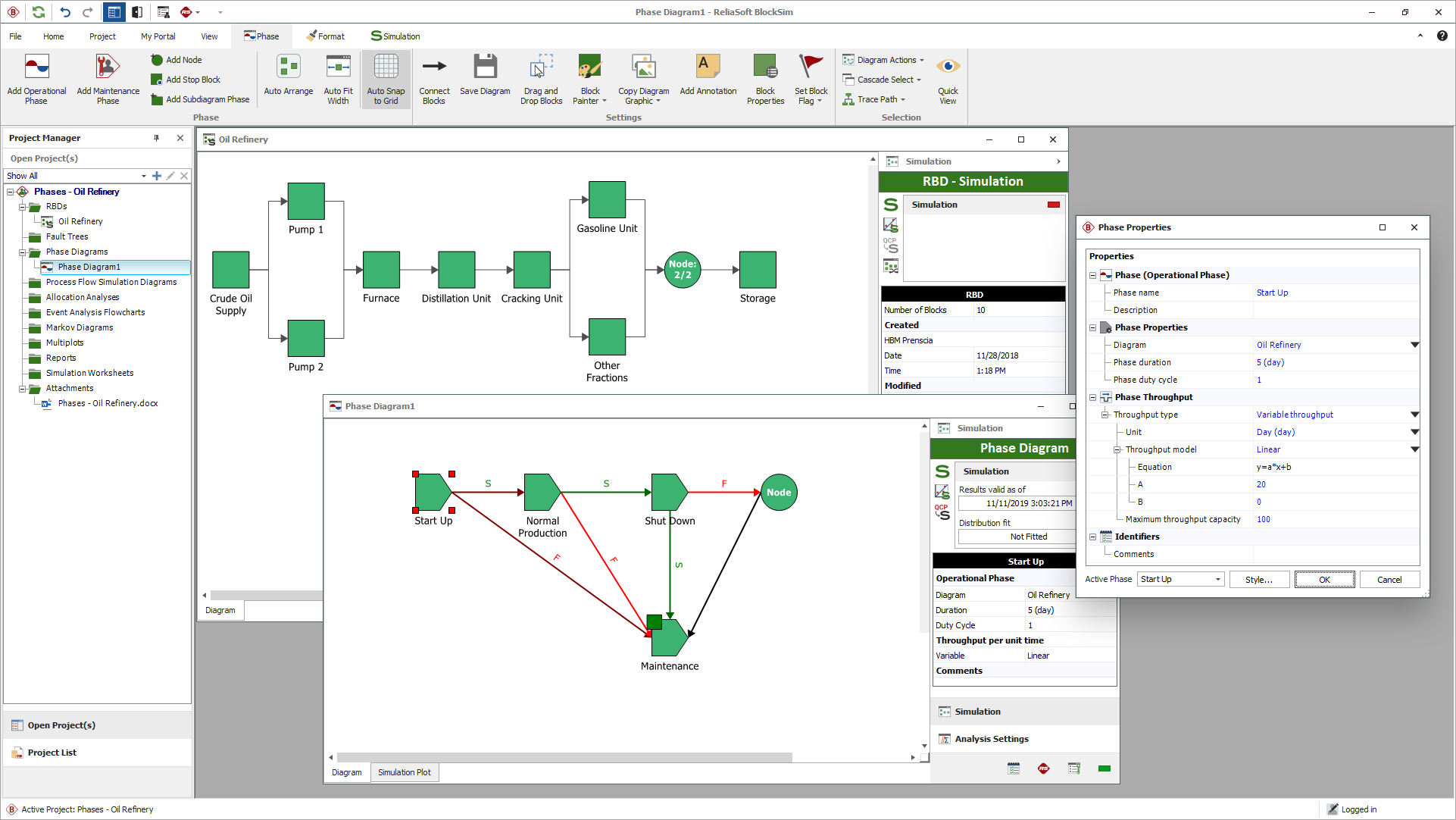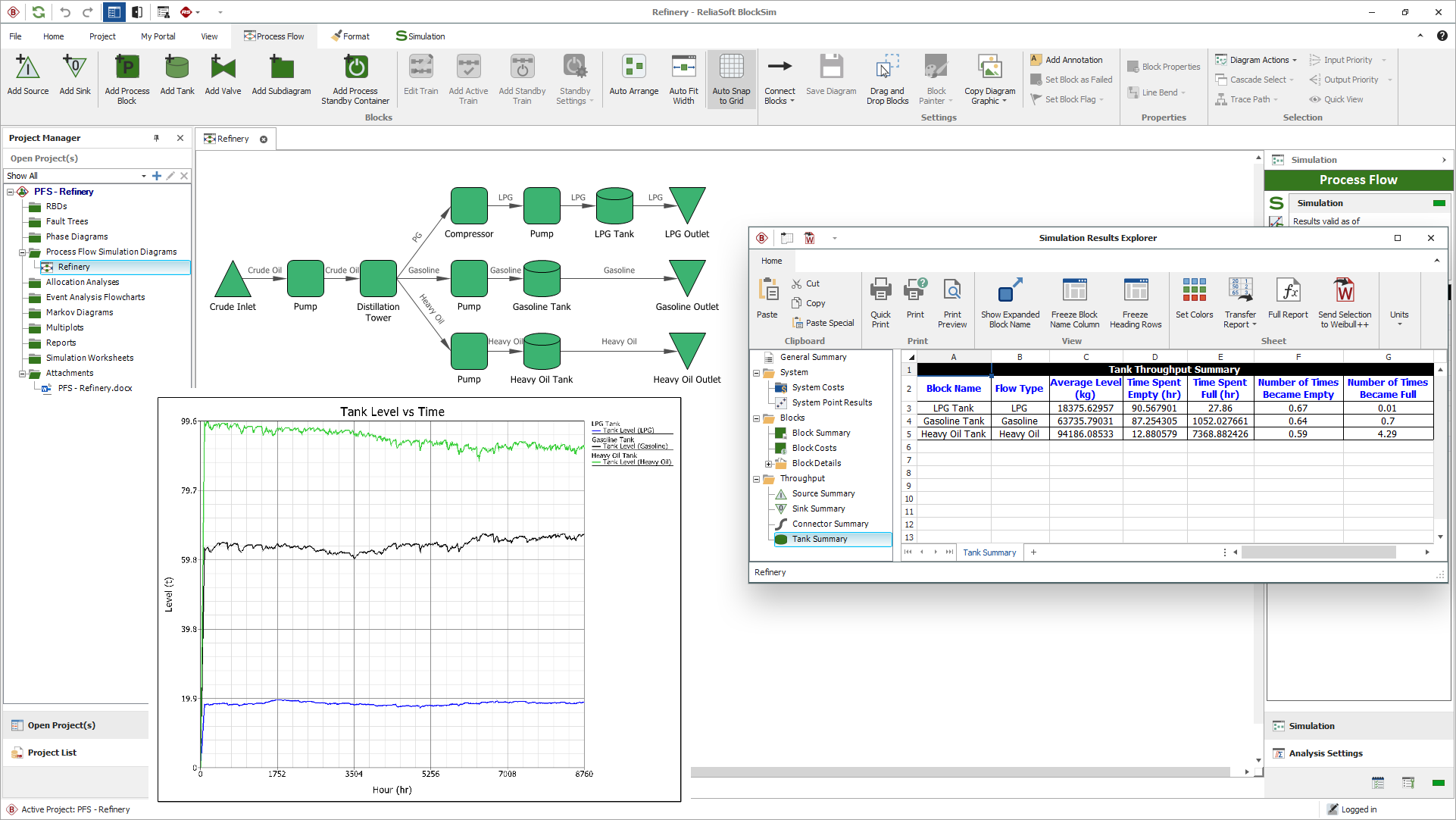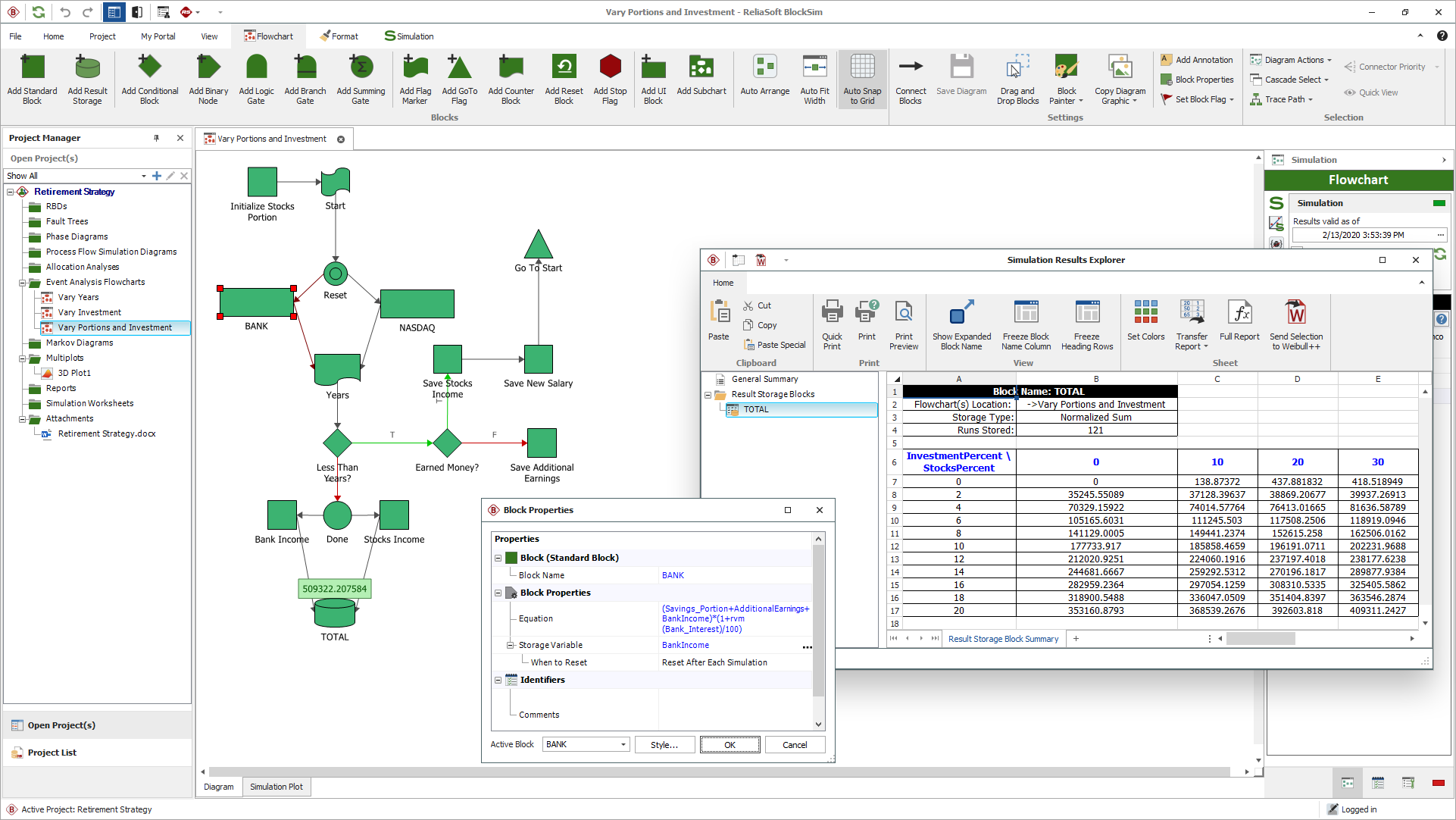Availability analysis via simulation diagrams
BlockSim simulation capability for reliability, availability, maintainability and supportability analysis of repairable systems is more flexible and realistic than ever. For a new system, you can use simulation results to optimize the design and make projections about how the system may perform in the field. For existing equipment, use the results for maintenance planning, throughput estimates, life cycle cost estimation and more.
When you utilize simulation, the analysis can consider:
- Task scheduling logistics, which includes a "Virtual Age" option for situations in which the scheduled maintenance task will be performed even if the item has failed.
- Restoration factor that captures the impact of repairs on the future reliability of the component.
- Duty cycles for components (or assemblies) that experience a different stress load than the rest of the system.
- Expected downtime associated with corrective or scheduled maintenance.
- Costs and logistical constraints associated with allocating the personnel (repair crews) and materials (spare parts) required to perform maintenance.
- Maintenance groups that identify components that will receive maintenance based on what happens to other components.
- State change triggers that activate or deactivate a block under certain conditions during the simulation. This provides increased modeling flexibility for highly complex dependency scenarios, such as standby configurations and other situations when you may need to divert the simulation onto an alternate path when a particular event occurs.
BlockSim simulations generate a wide variety of results at the system and/or component level (such as Uptime/Downtime, Mean Time to First Failure (MTTFF), Availability, Reliability, Number of Failures, Number of PMs/Inspections, Costs, etc.). You can use these results for many different applications, including:
- Choosing the most effective maintenance strategy based on considerations of safety, cost and/or availability.
- Using the optimum replacement tool to calculate both the optimum preventive maintenance (PM) and/or optimum inspection intervals.
- Managing the spare parts inventory based on considerations of cost, utilization rate, supply bottlenecks, etc.
- Identifying the components that have the biggest impact on availability (downtime).
The Log of Simulations feature provides the information you need to evaluate the variability in specific simulation results of interest.
Use the linear, exponential, power, logarithmic, Gompertz or Lloyd-Lipow models to extrapolate the failure times of a product based on its performance (degradation) over a period of time. Weibull++ also includes destructive degradation analysis and the option to create user-defined degradation models.




